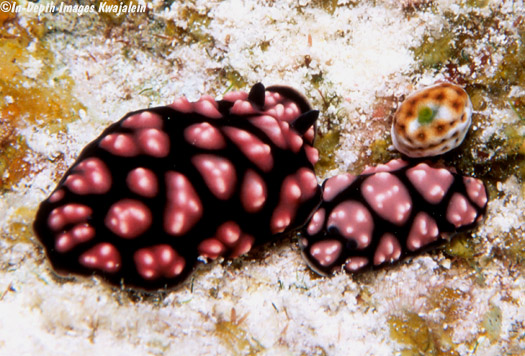
Phyllidiella pustulosa is probably the most often observed nudibranch in the Marshalls, both because it is common and because it tends to sit out in the open on hard substrates during the day. Like other phyllidiids, this species has chemical defenses to help prevent it from being eaten. We have seen them at Enewetak, Kwajalein, and Bikini Atolls on a variety of lagoon and seaward reefs from a depth of about 1 down to at least 60 meters. Stan Jazwinski photographed it at Ailinglaplap and John and Lynette Flynn recorded it from Rongelap. It is also one of the most visible nudibranchs at every tropical Pacific area we have visited, including Hawaii, Pohnpei, Nauru, Chuuk, Fiji, Bali, Lembeh Strait, Anilao (Philippines) and the Solomons. Phyllidiella pustulosa was first reported in the Marshalls from Enewetak, Kwajalein and Bikini Atolls as Phyllidia pustulosa by Johnson & Boucher (1984). It is possible that more than one species are represented on this page.
This is one of several similar species that probably constitute an example of Mullerian mimicry.

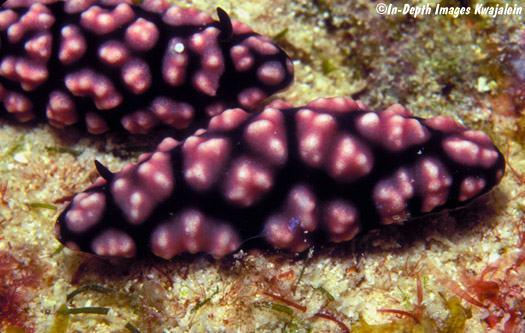
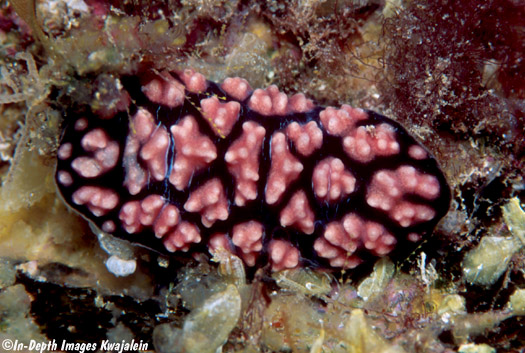
Since both of these were found apparently eating the yellow sponge below, I'm guessing that the smaller one at the bottom of the photo, which measures 3 to 4mm in length, is a juvenile Phyllidiella pustulosa.
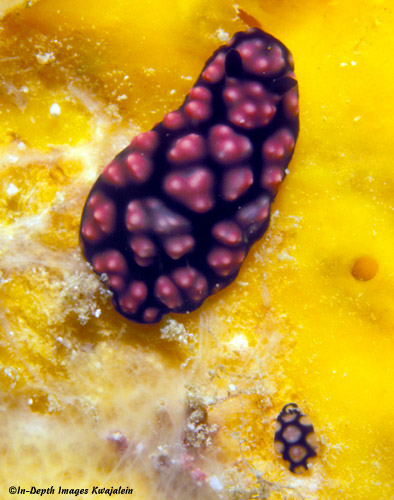
An anal papilla appears to be protruding from the lower part of the left specimen below.
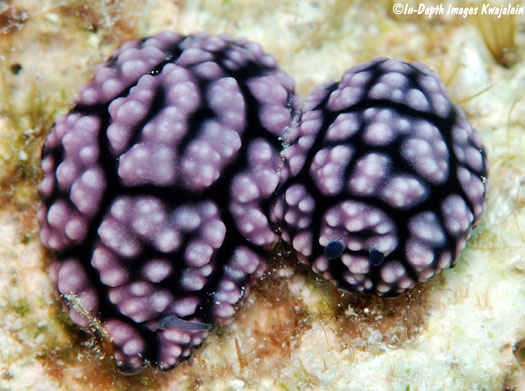
The specimen below is presumably a young specimen. It was found at Kwajalein on 22 February 2010.
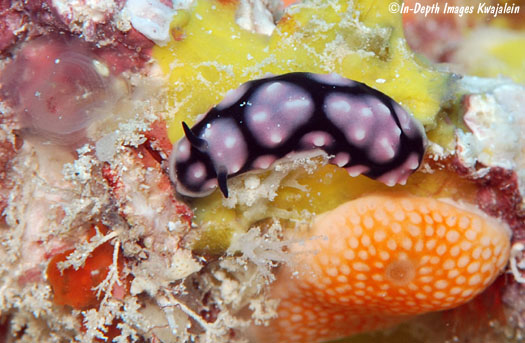
The one below appeared to be feeding on the brown sponge.
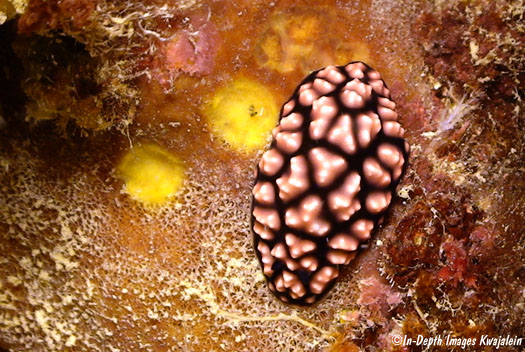
The Ailinglaplap specimen is immediately below.
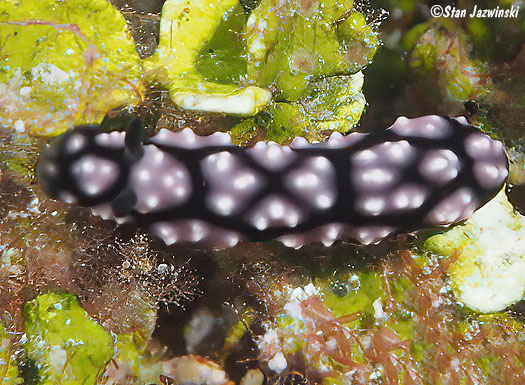
A couple of shots of an individual with its egg mass laid flat against the substrate.
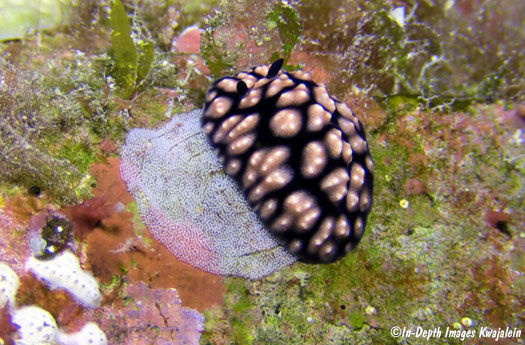
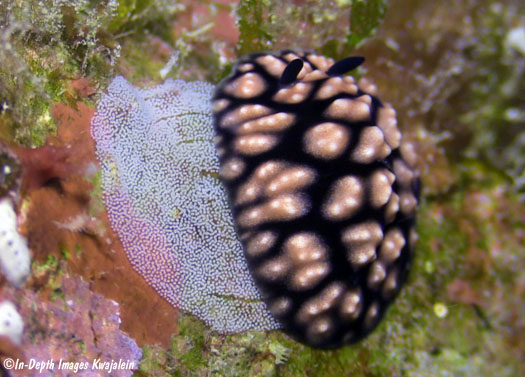
One from Enewetak Atoll.
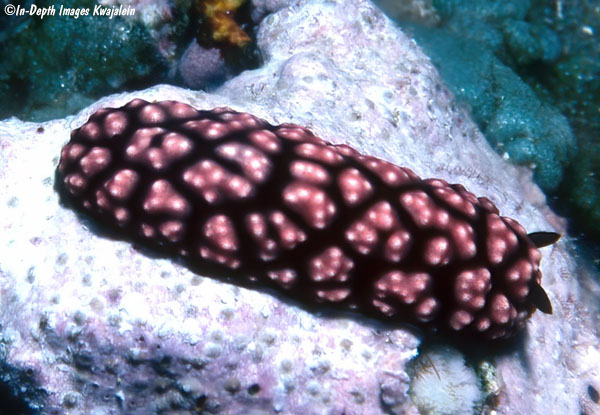
From Bikini Atoll.
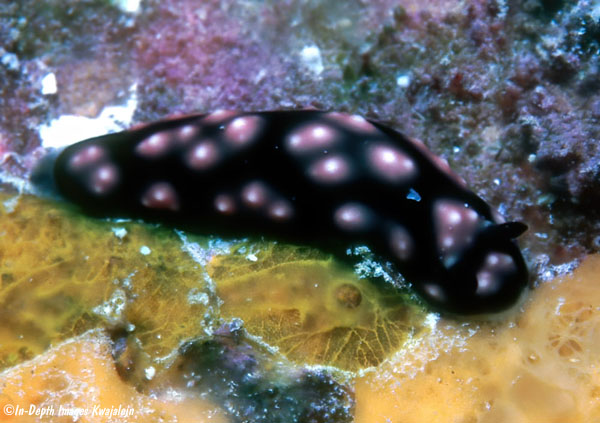
Created 25 December 2006
Updated 7 November 2021